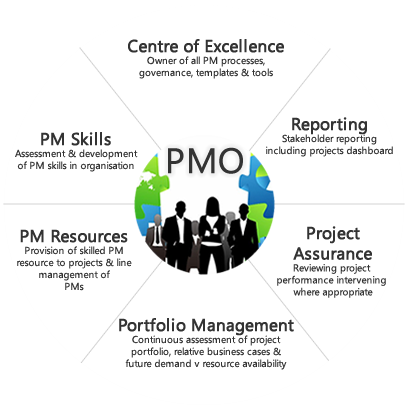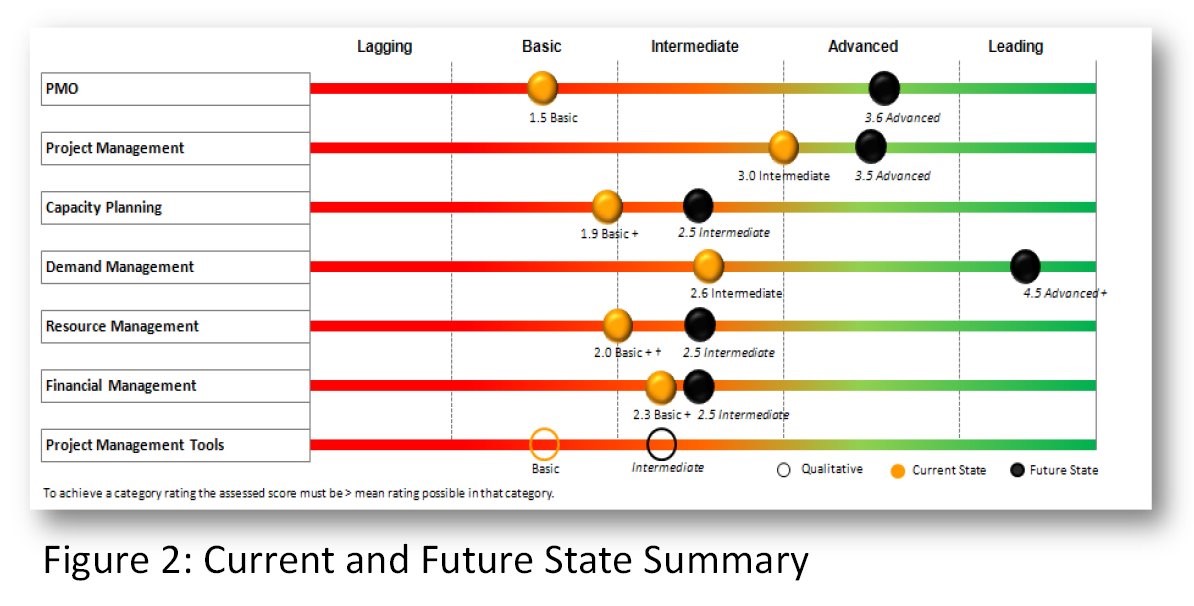Loading...

Most organizations are setup in an ad-hoc manner. The initial business plan is established with a view to cater to the business that is the source of the establishment and then as the organization starts operating the business, the required processes are developed and deployed as per the then requirements. This keeps on happening and at certain point in time the management realizes that the organization’s processes are no more talking to each other and there is need to optimize these processes so that the growth of the organization is sustained with these standardized and optimized processes.
HTP Technology’s BPR service works on this layer and helps the management of the customer organization to standardize and optimize the process areas in scope of the engagement. The processes from the scoped process areas are identified and mapped on as-is basis and then a comprehensive review is undertaken for finding out possible approaches to standardize and optimize these processes. Various possible solutions and combinations are developed to standardize and optimize the processes. Our consultants propose these solutions to the management of our customer organization so that most appropriate solutions can be selected. The selected solutions are then documented from a user perspective so that the deployment and operation becomes easier for the employees of the customer organization. The solutions are then deployed by the teams formulated by the management of the customer organization. Our consultants train and hand-hold these teams to deploy the solutions. Once the solutions are deployed, our auditors review and evaluate the deployment to assess if the deployment meets the intended objective. This is repeated till the deployment is done to a satisfactory level. Finally, a validation is conducted jointly by the management of our customer organization and our team and the new system gets certified.
Benefits
The benefits that an organization may get out of our BPR service are mostly based on the management’s intentions of selecting this service. However, following examples provide some direction about what the BPR can give the organizations in terms of its benefits.
No matter how effective your project and program management efforts are, they can always be improved. It may be that the people involved in the project aren't familiar with the proven disciplines of project management for addressing risk, quality, scheduling and so on. It might be that the people working so hard on the project should stay focused on their areas of expertise and leave the project management to those who are trained in that skill set. It could be that borrowing best practices from other industries can enhance their own practices.
When something isn't going right in a project -- progress is delayed, there's a lack of visibility into project status, scope is out of control -- a project or program management office or PMO could be the antidote. The PMO acts as a navigator. As the driver propels the car, the navigator reads the map. Even when the driver knows all of the operations of the car, if he or she doesn't have a "co-pilot" recommending where to go, when to turn and what the way is, the car -- the project -- will have a longer time reaching the final destination -- the goal.
The PMO provides a synthesis of the project status (schedule, risks, etc.) by delivering relevant data such as metrics or key performance indicators (KPIs) via tools such as dashboards and reports that enable company leaders to make better informed decisions. The role of the Project or Programme Management Office (PMO) varies significantly from organisation to organisation. Our expertise ensures your PMO delivers the maximum value for your organisation, driven by a fit-for-purpose design with appropriately skilled resource. The graphic below summarises the six key areas of PMO scope:

Because the success of projects primarily revolves around the activities of human beings, to succeed in a project, all stakeholders must be involved and committed to reaching the same goals as the project itself. A PMO helps facilitate, coordinate, communicate, lead and monitor. Those in the PMO are in a position to take into account all the people and drive the change management aspects of the project.
While the client will make the decisions, the PMO acts as an advisor, bringing experience, lessons learned and best practices from other industries. Setting up your first organizational PMO is a project itself. In this article I summarize the five steps for setting up your first PMO.
Step 1: Analyze the "As-is" Situation
As painful as self-analysis can be, the problems infecting the projects have to be identified and the potential solutions defined. This process calls for analysis of the current project team structure, organization and ways of working, as well as the interfaces that exist -- interactions with other departments along with suppliers and clients. The results of the analysis form the content of the business case for setting up the PMO.

Step 2: Set up the PMO Charter
Once a business sponsor buys into the business case for the PMO and signs on the dotted line to support the work and fund it, it's time to develop the PMO charter. The charter spells out what the PMO is expected to accomplish and how success will be measured. It provides a framework for project governance, the structure of the PMO and its deliverables. Because project managers will need to "buy" into the proposed changes, call on your buddies and PMO advocates among these stakeholders to provide feedback on the proposal and encourage them to "sell" the PMO structure to those who would oppose or resist it.
HTP TECHNOLOGY’s Implementation Roadmap

Step 3: Get to Work
It's time to put the PMO structure in place. This the stage where you'll establish procedures, methods and tool use, begin the work of filling in the details of the governance model (and possibly a governance council) and start to execute on your PMO plan for influencing quality, cost, delivery and performance (QCDP), especially in those problematic projects. Stay in touch with stakeholders to understand their challenges. Regularly review progress status against the goals set for the PMO.
Step 4: Seek Continual Improvement
Since a primary objective for having a PMO in the first place is to push for continual improvement, formalize those activities that are having a major impact on project outcome. For example, say that pockets of people are finally entering timely updates into the enterprise project system regarding tasks, resources, and budget and so on because the PMO has made the form easier to use. If that results in improvements in project reporting and better management decision-making, it's worth embedding the practice of updating project details into required job duties. Even though this adoption of new processes and work habits becomes a change management challenge, remember that success begets enthusiasm.
Step 5: Seek Outside Help to Achieve Step-level Improvement
Regular reviews will quickly tell you whether your PMO is finding success in its current objectives. Is that good enough? Perhaps. Or it may be that the organization wants the PMO that has proven its value to continue its development and maturation. As IT analyst firm Gartner explains, the scope of PMO work can be expected to grow "from tactical to strategic," and the scope of initiatives undertaken by the PMO will broaden from functional projects to enterprise-wide work. "Once the PMO has earned credibility with the business," Gartner reports, "it usually receives requests to help manage business projects."
Making step-level improvements in the work of the PMO may require expert outside help to show the PMO how to better control, manage and optimize its results. In that scenario, the PMO is a trusted partner, committed alongside the client to provide the energy needed to reach the goals of the project.
Typical Growth of PMO

Capability and Maturity Model Integration (CMMi)
Organizations often struggle with delivering consistent quality internally as well as externally. Not only their customers but their employees and other stakeholders too are victims of these inconsistencies. Following are few of the indicators of this experience –:
These are few of the many scenarios that indicates that the organization seriously is in need of a process improvement drive.Software Engineering Institute has formulated a model for driving such improvement efforts within a product company or a service provider or an acquirer of services of other companies – CMMI for Services (CMMI-SVC), CMMI for development (CMMI-DEV) and CMMI for Acquisition (CMMI-ACQ)
HTP Technology has a proficient team of consultants to integrate these models for an organization. Our well established approach for deploying the desired CMMI model helps organizations to build a highly efficient system around the process areas described within the CMMI model that offers a proven mechanism for managing process improvements.
Benefits
The benefits that an organization may get out of our CMMI consulting service are mostly based on the management’s intentions of selecting this service. However, following examples provide some direction about what the CMMI can give the organizations in terms of its benefits –
Information Technology Governance Solution- GRC
In today’s connected world Information Technology (IT) plays a major role within all organizations; be it a manufacturing company or a service organization or a Bank. Most organizations invest in IT and setup a function to manage the IT infrastructure and services; they call it the ‘IT Department’!
The key responsibilities of the IT Department include managing the infrastructure like servers, networks, etc. and deliver user support services. As the infrastructure needs go on increasing, the support requirements also grow in double the rate. But the size of the IT team does not get aligned to that. One of the many reasons why the organizations do not invest into the IT team is the overheads attached to it. Whatever the size of the IT team is, there are ways to efficiently manage IT services.
HTP Technology offers a well-defined framework within which the IT team can efficiently manage the infrastructure and services. The IT Governance System that we have designed offers best of the global practices in IT Service Management, Information Security, IT Service Continuity, etc. Our IT Governance system has adopted processes offered by global frameworks and standards like CMMI, COBIT, ITIL, ISO 20000-1, ISO 270001 and ISO 22301.
We customize our solution to fit the size and complexity of the IT infrastructure as well as IT Team size of our customer and deliver a system that drives the IT service delivery and support processes that are governed in line with the customer’s business objectives.
Benefits
The benefits that an organization may get out of our ITGS service are mostly based on the management’s intentions of selecting this service. However, following examples provide some direction about what the ITGS can give the organizations in terms of its benefits –
Training Services
Learning and development is an integral part of a growing organization as it propels the growth. We offer tailored training programmes that meet the learning and development goals of an organization. We conduct both publicly hosted as well as in-house training programmes. Some of our popular training programmes include –
Partners
